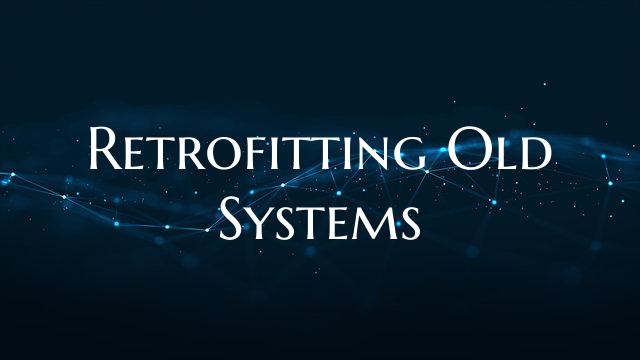Retrofitting Old Systems
Introduction: Retrofitting old systems has become a vital strategy for maximizing efficiency, minimizing waste, and promoting sustainability in various industries. By upgrading outdated equipment, technology, or processes, organizations can enhance performance, reduce energy consumption, and adapt to changing market demands. This article explores the benefits, challenges, and best practices associated with retrofitting old systems to meet modern efficiency and sustainability standards.
Benefits of Retrofitting Old Systems: 1. Improved Efficiency: Upgrading old systems can significantly improve efficiency by utilizing advanced technologies that enhance performance and reduce operational costs. 2. Cost Savings: Retrofitting old systems can lead to substantial cost savings through reduced energy consumption, maintenance expenses, and downtime. 3. Environmental Impact: By retrofitting old systems to be more energy-efficient and sustainable, organizations can reduce their carbon footprint and contribute to environmental conservation efforts. 4. Enhanced Performance: Upgraded systems often deliver superior performance, reliability, and functionality compared to outdated equipment, increasing productivity and competitiveness. 5. Regulatory Compliance: Retrofitting old systems can help organizations comply with evolving regulations and standards related to energy efficiency, emissions reduction, and waste management.
Challenges of Retrofitting Old Systems: 1. Compatibility Issues: Integrating new components or technologies with existing systems can present compatibility challenges that require careful planning and expertise. 2. Budget Constraints: Retrofit projects may require significant upfront investments, which can be a barrier for organizations with limited financial resources. 3. Disruption to Operations: Retrofitting old systems may cause temporary disruptions to business operations, requiring strategic scheduling and mitigation measures. 4. Skill Gap: Retrofit projects often demand specialized knowledge and skills that may not be readily available within the organization, necessitating external expertise or training. 5. Uncertainty: The outcomes of retrofitting projects can vary, and unexpected challenges may arise, requiring flexibility and adaptability in the planning and implementation process.
Best Practices for Retrofitting Old Systems: 1. Conduct a thorough assessment of the existing system to identify inefficiencies, opportunities for improvement, and potential risks. 2. Set clear goals and objectives for the retrofit project, including targets for energy savings, performance enhancements, and sustainability outcomes. 3. Engage stakeholders from various departments to ensure alignment, gather input, and secure buy-in for the retrofitting initiative. 4. Work with experienced consultants, contractors, or suppliers with expertise in retrofit projects to navigate challenges and achieve optimal results. 5. Monitor and evaluate the performance of the retrofitted systems regularly to track progress, identify issues, and make necessary adjustments for continuous improvement.
Conclusion: Retrofitting old systems is a strategic approach to enhancing efficiency, sustainability, and competitiveness in today's rapidly evolving business landscape. By investing in upgrades and improvements to outdated equipment and processes, organizations can unlock numerous benefits, overcome challenges, and establish a more resilient and future-ready operational framework. Embracing the principles of retrofitting can lead to long-term cost savings, environmental stewardship, and operational excellence for organizations across industries.

